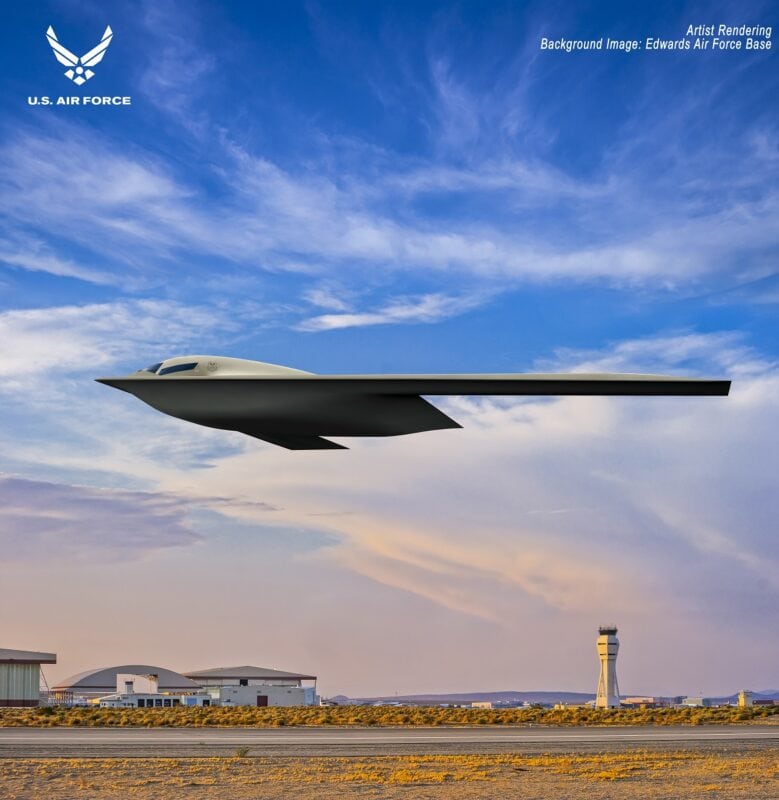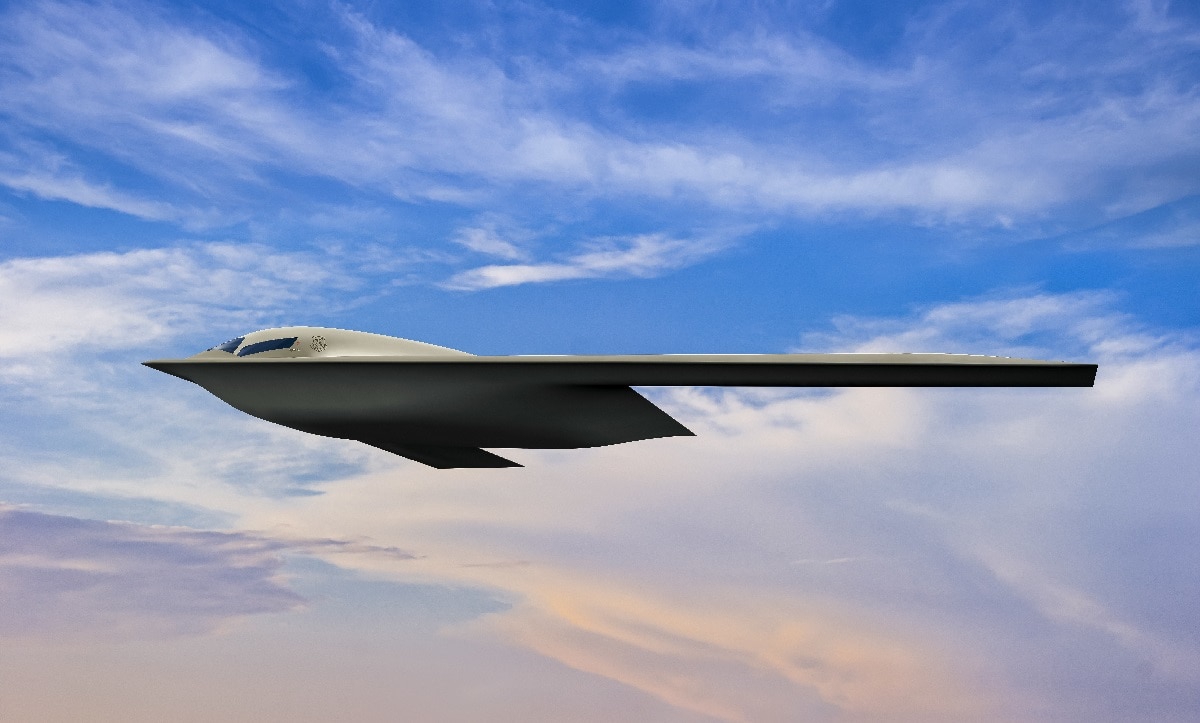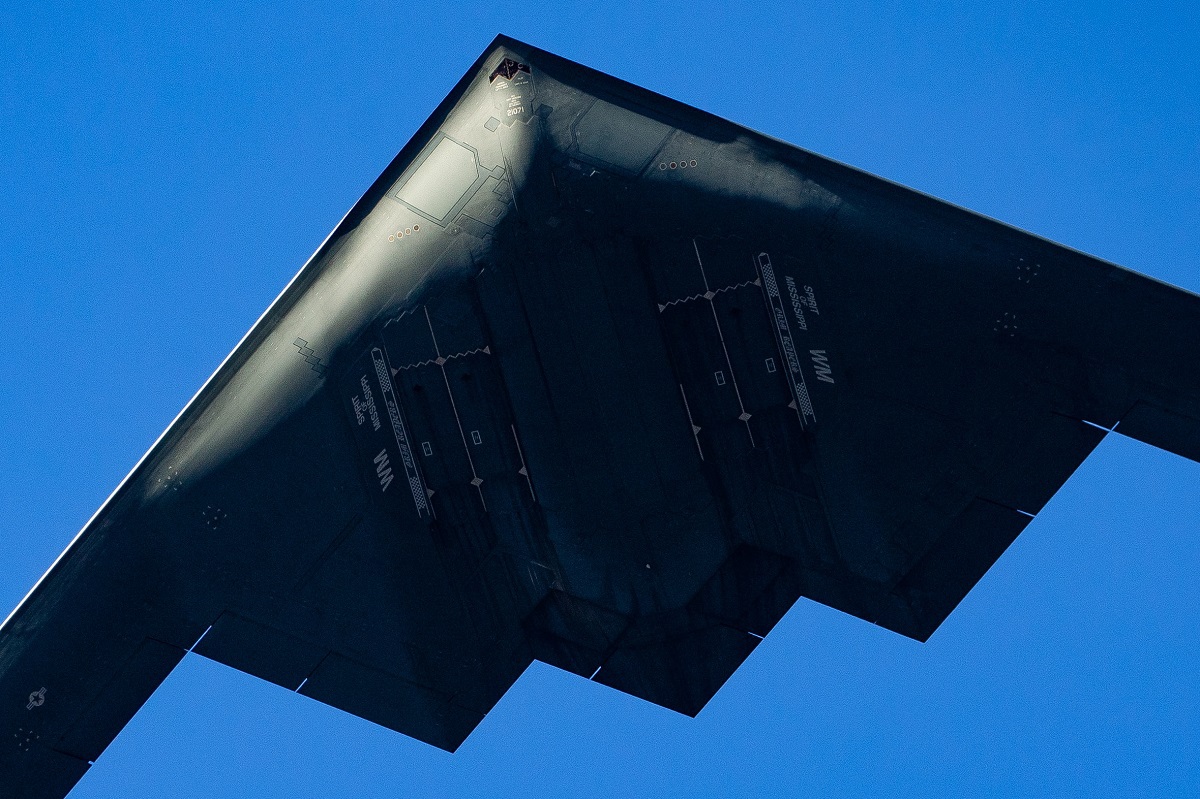The U.S. Air Force plans to take a “prudent” amount of time developing the technology and testing the new B-21 Raider. The stealth bomber is meeting acquisition milestones and keeping on schedule and budget. That’s why if this process is deemed satisfactory in the future, the rate of production could speed up. Air Force brass acknowledges there could be hiccups in the development process, but so far no serious problems have emerged. U.S. Senator Tom Cotton from Arkansas even says the program has been “exquisitely run.”
Take Time During Development; Quicken Pace Later
Air Force acquisition chief Lt. Gen. Duke Z. Richardson told the Senate Arms Services Committee on May 17 that “Speed with discipline is our mantra on that program … we’re moving as swiftly as we feel it’s prudent to do. Once we get further along in the system verification process … we should then look at accelerating the buy,” he said. But Richardson added that speedier production will not happen in the early stages of the program.
The Airplane Requires an Expensive Investment
The B-21 is supposed to make its first flight in 2023. Northrop Grumman has six B-21s in various stages of assembly at Northrop Grumman’s Plant 42 in Palmdale, California. The Air Force is planting $20 billion into the B-21 program through FY2027. Research and development costs will add another $12 billion to the total.
Could Inflation Rear Its Head?
At this time, the Air Force is planning to make one hundred next-generation B-21s. But this could change as the service branch and Congress might adjust the program because of longer lead times and greater expense due to inflation and supply chain issues. There could also be fewer airplanes built, depending on the extent to which other manned and unmanned aircraft work with the B-21’s family of systems approach.
B-21 Will Have a Number of Intriguing Features
The B-21 is a conventional and nuclear-capable bomber. The plan is for the B-21 and B-52 to handle long-range strike missions while the B-1 and B-2 bombers get gradually replaced. The B-21 will better evade enemy radar and sensors. It will fire stand-off cruise missiles, drop precision-guided bombs, and will likely launch hypersonic weapons. The airplane will be manned with an unmanned option in later years of assembly. There are plans for at least one drone to fly with the B-21 in a “loyal wingman” concept in which the unmanned airplane uses artificial intelligence to conduct targeting while also collecting intelligence, surveillance, and reconnaissance data.

Shown is a B-21 Raider artist rendering graphic. The rendering highlights the future stealth bomber with Edwards Air Force Base, Calif., as the backdrop. Designed to perform long range conventional and nuclear missions and to operate in tomorrow’s high end threat environment, the B-21 will be a visible and flexible component of the nuclear triad. (U.S. Air Force graphic)

Image: U.S. Air Force

B-2 Stealth Bomber. Image: DOD Flickr.

Construction of a B-21 Raider Environmental Protection Shelter prototype is completed at Ellsworth Air Force Base, S.D., Feb. 26, 2021. Ellsworth AFB was selected as the test site for the B-21 EPS as it provides the most extreme and diverse weather conditions to test the temporary structures. The testing for the EPS prototypes at Ellsworth AFB does not interfere with Air Force compliance to the National Environmental Protection Act/Environmental Impact Statement preparation for the first B-21 Main Operating Base. (U.S. Air Force photo by Airman First Class Quentin Marx)
Keep an Eye on the Acquisition Cycle
The B-21 is in the early stages of production, and this is a time when designers and engineers carefully poke and prod the bomber for any flaws. Typically, this takes longer than when an airplane goes into serial production. It’s a good sign that there are no “bumps along the road” as acquisition leaders have said, but that could change. The Air Force is preparing for any schedule slip and Congress will be steadfastly watching for budget problems.
This means the Air Force and Northrop could order more airplanes to speed up procurement as long as there aren’t any early technical problems. Much will depend on that maiden flight next year to see how well the airplane performs in testing. Full-scale manufacturing will not likely take place until 2026.
Now serving as 1945’s Defense and National Security Editor, Brent M. Eastwood, Ph.D., is the author of Humans, Machines, and Data: Future Trends in Warfare. He is an Emerging Threats expert and former U.S. Army Infantry officer. You can follow him on Twitter @BMEastwood.

